The rivalry between German automotive giants BMW and Mercedes-Benz continues to captivate car enthusiasts, particularly with the latest models of the BMW X1 and the Mercedes GLB. Both SUVs cater to a similar market segment but offer unique features and innovations that deserve a thorough comparison. This article will dissect the technical aspects, performance metrics, and interior amenities of these leading contenders in the compact luxury SUV category.
BMW X1 vs Mercedes GLB – Which one offers the better deal?
Compare performance, boot capacity, efficiency and price at a glance.
Find out which car is the better choice for you – BMW X1 or Mercedes GLB?
Design and Dimensions
The BMW X1 exudes a sporty elegance with its bold lines and muscular stance. Measuring 4500 mm in length, 1845 mm in width, and up to 1642 mm in height, it boasts a compact but powerful presence on the road. In contrast, the Mercedes GLB stretches slightly longer at 4634-4650 mm, with a wider body ranging from 1834 to 1850 mm and a height of 1665-1692 mm. This additional size contributes to a more substantial cabin and a slightly higher cargo capacity, reaching up to 570 liters compared to the X1’s maximum of 540 liters.
Powertrains and Performance
The BMW X1 offers a variety of engine options, including diesel, petrol, and hybrid powertrains, with power outputs ranging from 150 HP to a robust 326 HP. The dual-clutch automatic transmission is standard, ensuring smooth gear shifts. Acceleration from 0-100 km/h varies significantly across models, with a quick 5.4 seconds noted for the most powerful version. Fuel consumption ranges from an efficient 4.6 L/100 km for hybrids to 6.5 L for the petrol versions.
Meanwhile, the Mercedes GLB also showcases a diverse lineup of engines, including petrol and diesel hybrids. Power figures in the GLB span from 150 HP to 320 HP, and acceleration from 0-100 km/h offers a competitive edge, peaking at just 5.5 seconds. Its fuel efficiency reaches an impressive 5.6 L/100 km for the diesel variant, while some petrol engines touch 7 L/100 km.
Drivetrain and Handling
Both the BMW X1 and Mercedes GLB are available in front-wheel and all-wheel-drive configurations, appealing to various driving preferences. The X1's agile handling is attributed to its lower curb weight, ranging from 1575 kg to 1935 kg, enabling a sportier driving experience. On the flip side, the GLB’s weight varies between 1640 kg to 1820 kg, slightly impacting agility but offering enhanced stability, especially during high-speed maneuvers.
Innovative Technology and Features
Inside, both SUVs boast advanced technology suites. The BMW X1 incorporates the latest iDrive system, featuring a large touchscreen and voice command capabilities, a hallmark of BMW's commitment to user-friendly technology. The Mercedes GLB shines with its MBUX infotainment system, recognizing natural language commands and offering seamless smartphone integration. Both models come equipped with advanced driver-assistance systems, enhancing safety and ease of driving.
Interior Comfort and Cargo Space
Both vehicles can comfortably seat five passengers, prioritizing comfort and luxury. The GLB, however, edges out in interior space and versatility, offering more headroom and legroom. The X1, with its premium materials and thoughtful layout, provides a driver-centric cockpit that feels both refined and functional.
Conclusion: Which Should You Choose?
In the battle of the BMW X1 versus the Mercedes GLB, both SUVs present compelling cases for consumers seeking luxury and performance in a compact package. The BMW X1 leans more towards sporty performance with its agile handling and robust engine lineup, while the Mercedes GLB offers superior interior space and cutting-edge technology.
Your choice ultimately comes down to personal preference—whether you favor the spirited dynamism of the BMW or the spacious, tech-savvy comfort of the Mercedes. Whichever path you choose, both models stand as prime examples of automotive excellence in the luxury compact SUV sector.
Here’s where it gets real: The technical differences in detail
Costs and Efficiency:
Price and efficiency are key factors when choosing a car – and this is often where the real differences emerge.
BMW X1 has a barely noticeable advantage in terms of price – it starts at 38200 £, while the Mercedes GLB costs 40500 £. That’s a price difference of around 2281 £.
Fuel consumption also shows a difference: BMW X1 manages with 2.50 L and is therefore decisively more efficient than the Mercedes GLB with 5.60 L. The difference is about 3.10 L per 100 km.
Engine and Performance:
Power, torque and acceleration are the classic benchmarks for car enthusiasts – and here, some clear differences start to show.
When it comes to engine power, the BMW X1 has a minimal edge – offering 326 HP compared to 320 HP. That’s roughly 6 HP more horsepower.
In acceleration from 0 to 100 km/h, the BMW X1 is barely noticeable quicker – completing the sprint in 5.40 s, while the Mercedes GLB takes 5.50 s. That’s about 0.10 s faster.
There’s no difference in top speed – both reach 250 km/h.
There’s also a difference in torque: BMW X1 pulls to a small extent stronger with 477 Nm compared to 400 Nm. That’s about 77 Nm difference.
Space and Everyday Use:
Cabin size, boot volume and payload all play a role in everyday practicality. Here, comfort and flexibility make the difference.
Both vehicles offer seating for 5 people.
In curb weight, BMW X1 is barely noticeable lighter – 1575 kg compared to 1640 kg. The difference is around 65 kg.
In terms of boot space, the Mercedes GLB offers hardly perceptible more room – 570 L compared to 540 L. That’s a difference of about 30 L.
In maximum load capacity, the Mercedes GLB performs to a small extent better – up to 1805 L, which is about 205 L more than the BMW X1.
Maximum payload is identical – both can carry up to 500 kg.
Who comes out on top?
Overall, the BMW X1 shows itself to be is largely superior and secures the title of DriveDuel Champion.
It convinces with the more balanced overall package and proves to be the more versatile choice for everyday use.
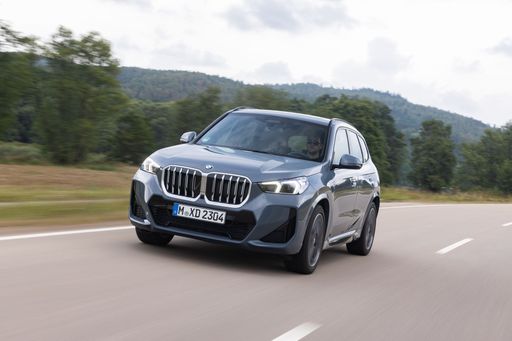 @ BMW Group Press
@ BMW Group Press
BMW X1
BMW X1
The BMW X1 brings a premium feel to compact crossover life, wrapping practical space and agile handling into a tidy, upscale package. It’s ideal for buyers who want BMW driving dynamics without the bulk, offering everyday comfort and a few clever tricks to keep the commute interesting.
details @ BMW Group Press
@ BMW Group Press
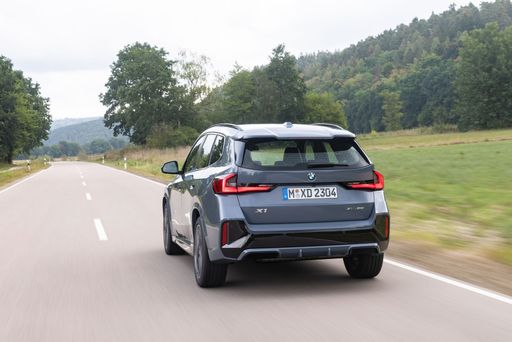 @ BMW Group Press
@ BMW Group Press
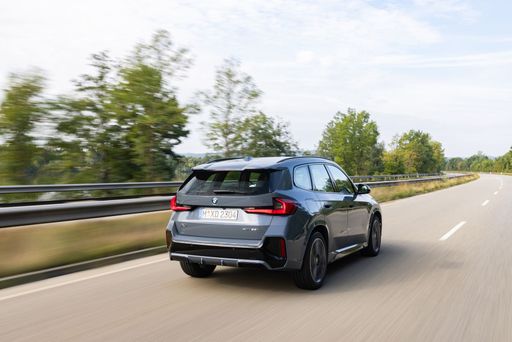 @ BMW Group Press
@ BMW Group Press
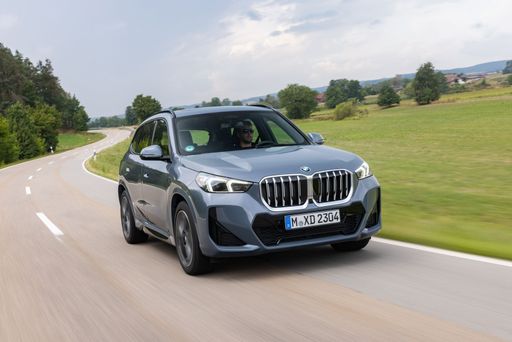 @ BMW Group Press
@ BMW Group Press
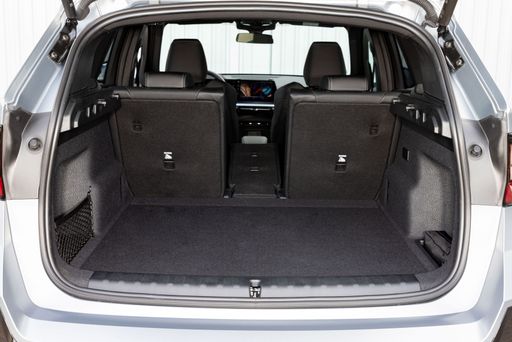 @ BMW Group Press
@ BMW Group Press
Mercedes GLB
The Mercedes GLB is a practical compact SUV that mixes boxy, family-friendly space with premium German polish, making it an appealing choice for buyers who want usefulness without pretension. It drives with a confident, composed feel and somehow manages to look both rugged and refined — the grown-up SUV that still likes to have fun.
details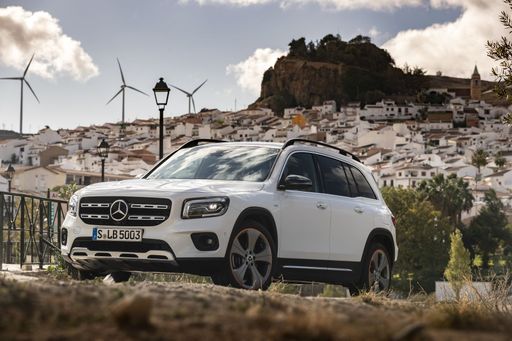 @ Mercedes-Benz Group Media
@ Mercedes-Benz Group Media
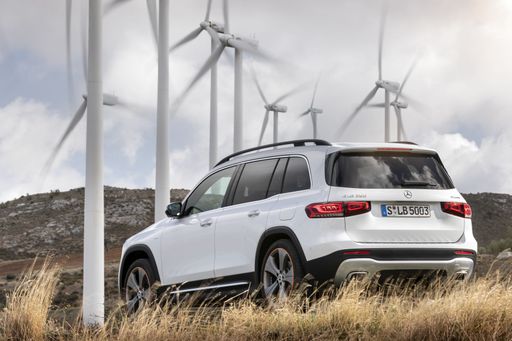 @ Mercedes-Benz Group Media
@ Mercedes-Benz Group Media
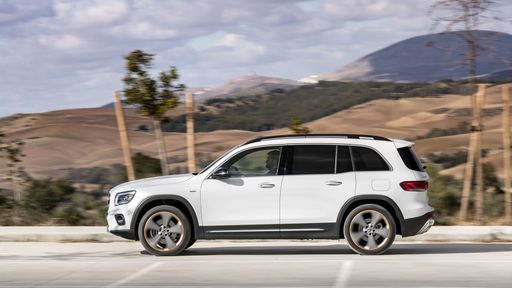 @ Mercedes-Benz Group Media
@ Mercedes-Benz Group Media
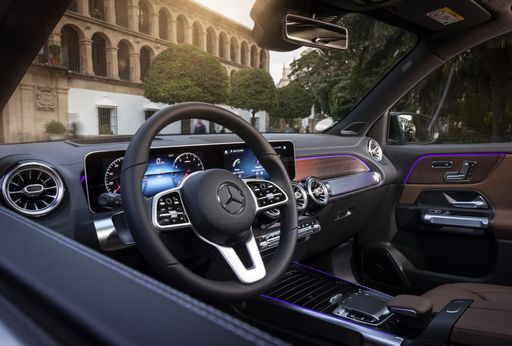 @ Mercedes-Benz Group Media
@ Mercedes-Benz Group Media
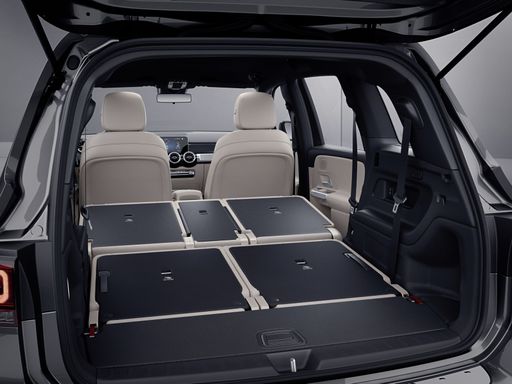 @ Mercedes-Benz Group Media
@ Mercedes-Benz Group Media
 @ BMW Group Press
@ BMW Group Press
|
 @ Mercedes-Benz Group Media
@ Mercedes-Benz Group Media
|
|
|
|
Costs and Consumption |
|
|---|---|
|
Price
38200 - 55500 £
|
Price
40500 - 65300 £
|
|
Consumption L/100km
2.5 - 7.7 L
|
Consumption L/100km
5.6 - 9 L
|
|
Consumption kWh/100km
-
|
Consumption kWh/100km
-
|
|
Electric Range
81 km
|
Electric Range
-
|
|
Battery Capacity
14.20 kWh
|
Battery Capacity
-
|
|
co2
57 - 175 g/km
|
co2
146 - 204 g/km
|
|
Fuel tank capacity
47 - 54 L
|
Fuel tank capacity
52 - 60 L
|
Dimensions and Body |
|
|---|---|
|
Body Type
SUV
|
Body Type
SUV
|
|
Seats
5
|
Seats
5
|
|
Doors
5
|
Doors
5
|
|
Curb weight
1575 - 1935 kg
|
Curb weight
1640 - 1820 kg
|
|
Trunk capacity
490 - 540 L
|
Trunk capacity
565 - 570 L
|
|
Length
4500 - 4505 mm
|
Length
4634 - 4650 mm
|
|
Width
1845 mm
|
Width
1834 - 1850 mm
|
|
Height
1622 - 1642 mm
|
Height
1665 - 1692 mm
|
|
Max trunk capacity
1495 - 1600 L
|
Max trunk capacity
1800 - 1805 L
|
|
Payload
490 - 500 kg
|
Payload
500 kg
|
Engine and Performance |
|
|---|---|
|
Engine Type
Diesel MHEV, Petrol MHEV, Petrol, Diesel, Plugin Hybrid
|
Engine Type
Petrol MHEV, Diesel
|
|
Transmission
Automatic
|
Transmission
Automatic
|
|
Transmission Detail
Dual-Clutch Automatic
|
Transmission Detail
Dual-Clutch Automatic
|
|
Drive Type
Front-Wheel Drive, All-Wheel Drive
|
Drive Type
Front-Wheel Drive, All-Wheel Drive
|
|
Power HP
136 - 326 HP
|
Power HP
116 - 320 HP
|
|
Acceleration 0-100km/h
5.4 - 9.2 s
|
Acceleration 0-100km/h
5.5 - 11.5 s
|
|
Max Speed
190 - 250 km/h
|
Max Speed
188 - 250 km/h
|
|
Torque
230 - 477 Nm
|
Torque
230 - 400 Nm
|
|
Number of Cylinders
3 - 4
|
Number of Cylinders
4
|
|
Power kW
100 - 240 kW
|
Power kW
85 - 235 kW
|
|
Engine capacity
1499 - 1998 cm3
|
Engine capacity
1332 - 1991 cm3
|
General |
|
|---|---|
|
Model Year
2024 - 2025
|
Model Year
2025
|
|
CO2 Efficiency Class
D, E, F, B
|
CO2 Efficiency Class
E, F, G
|
|
Brand
BMW
|
Brand
Mercedes-Benz
|
Is the BMW X1 offered with different drivetrains?
The BMW X1 is offered with Front-Wheel Drive or All-Wheel Drive.
The prices and data displayed are estimates based on German list prices and may vary by country. This information is not legally binding.
